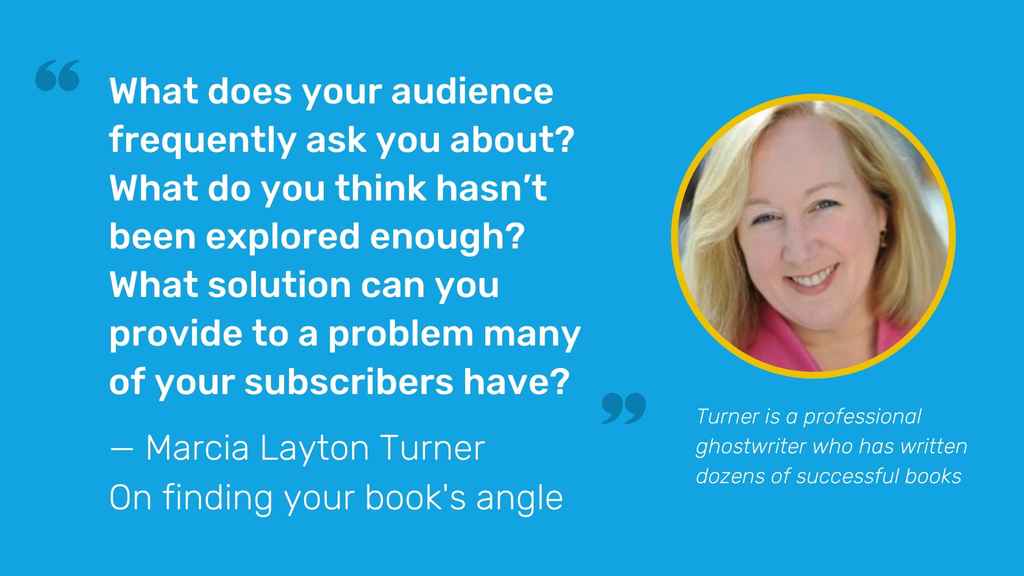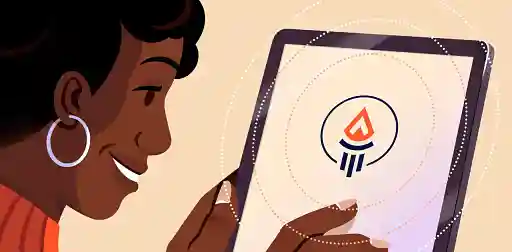Blog • Understanding Publishing
Last updated on Oct 14, 2025
How to Turn Your Blog Into a Book in 2025
Martin Cavannagh
Head of Content at Reedsy, Martin has spent over eight years helping writers turn their ambitions into reality. As a voice in the indie publishing space, he has written for a number of outlets and spoken at conferences, including the 2024 Writers Summit at the London Book Fair.
View profile →With the democratization of the web, bloggers and social media mavens can reach thousands of eager fans every day. Blogging is a great way to build your platform and connect with readers — and having come this far, you may be thinking about how to turn your blog into a book for better business!
Indeed, publishing a book allows you to display your expertise, offer up something new, and maybe even turn a profit. Let’s take a look at how you can accomplish that, in this five-step guide on turning your blog into a book.

Never written a book before?
The best ghostwriters in the business can help. Come meet them!
Learn how Reedsy can help you craft a beautiful book.
1. Evaluate your blog content
First and foremost, you’ve got to know where you stand with your existing content. If you’ve been writing a blog for years, you’ll need to whittle it down to the best, most relevant material for your book. Conversely, if you’re a new-ish blogger, you’ll need to think about how to put together a book without rehashing your blog in its entirety. Here are a few tips to help:
Start with your most popular posts 💯
Take, say, your 10 most-read blog posts and break them down side-by-side in a spreadsheet. In terms of content, note the topic, presentation, style, and takeaways of each post; in terms of numbers, record monthly traffic, comments, likes, shares, and anything else that clearly indicates popularity.
Then ask yourself: what do these posts have in common? For example, do they all include fun personal anecdotes, or teach an unusual lesson? This is where you’ll begin to identify the core themes of your book and what readers will expect to get out of it.
Look at your favorite posts 💝
These are posts that may not have performed as well as your most popular content, but for which you still have a special fondness. What were you trying to say in these posts that may have gotten lost in translation, or simply glossed over? Writing a book means your underrated content gets a second chance — but only if you carefully consider how to make it more compelling this time around.
Compare older posts to newer posts ⚖️
Not only will this show how your voice has evolved, but also how you might update old material to align with the new — for instance, if your opinions on a certain subject have changed, or if you could include more context about something. As with your underperforming content, these issues can (and should!) be addressed in your book.
Survey your readers ✅
Finally, if you’ve gathered plenty of data and still have a few nagging questions, you can always ask your audience directly. For example, if you’re not sure why a seemingly average post had off-the-charts engagement, ask your readers: “Did you like X post, and if so, why?” Take each response with a grain of salt, as it may not reflect the majority — but it’s definitely worth a shot when trying to decide what’s essential to your book.
2. Put together an outline

Now that you have a strong sense of your existing content, you can create a rough outline of your book. But let’s revisit those core themes first: how will your book emphasize them, while also taking a fresh angle to hold readers’ interest?
For the latter, ghostwriter Marcia Layton Turner suggests thinking about what would be most useful for readers. “What does your audience frequently ask you about?” she says. “What topic do you think hasn’t been explored enough? What solution can you provide to a problem many of your subscribers have?”
Once you’ve devised a concept that combines your established themes with an intriguing new angle, you can start building an outline that fits the bill. Here are some of our favorite tips!
Go chronologically or by theme 📆
How will you organize your material around your central concept? For most blog-to-book projects, you can either order things chronologically (if your story has a satisfying narrative arc over time) or by theme (if there are several key ideas feeding into your main concept).
For the most part: memoirs and self-help books based on your experience may benefit from a chronological structure, while business books, how-to books, and other nonfiction books without much of a personal narrative may be better served by thematic clusters.
But these methods aren’t mutually exclusive! One great example of chronological nonfiction that also tackles distinct themes in each section is Michelle Obama’s Becoming, which recounts her life from childhood to First Ladyhood in three parts: Becoming Me, Becoming Us, and Becoming More.
Alternate updated content with all-new content ✨
Much of your book will consist of updated blog content — posts you’ve already written, but can expand in ways that readers will enjoy. However, some of your sections should be 100% new. As ghostwriter Vanessa Mickan wisely advises, “Your dedicated readers will not want to pay for something they’ve already read online for free.”
Say you’re a food blogger, and one of your posts is a recipe for the perfect chocolate cream pie. The new cookbook version of that post might include different types of crust, vegan alternatives, and better photos. If you also add a full-length recipe for key lime pie, that’s brand-new content — and just the type of thing you want to remember in your outline, so you don’t end up with a whole book of been-there-done-that.
Learn more in this post on how to outline a nonfiction book, which breaks down more specific types of outlines you might consider.
3. Fill in any content gaps

With your structure in place, it’s time to shape your relevant blog posts into a cohesive whole — and to begin filling in the gaps!
You can start off easy by just editing your blog posts at first. Your older posts will inevitably need some polishing, and new posts might still require some adjustment to read more “like a book”: longer paragraphs, no hyperlinks, and smoother transitions from section to section.
From there, you can progress to offering something new in each post. This is where you’ll need to flesh out all the details you may not have considered while outlining. In some cases, you may be able to merge multiple pieces of content: “What do you have that could be combined with other posts to address a particular theme?” says Marcia Layton Turner.
If you’re unsure how to expand your posts in a meaningful way, here are some questions to get the ball rolling:
- What have I learned on this topic since writing the original post?
- Do I have any personal anecdotes to supplement it?
- Can I give a useful example or case study?
- How can I address the comments people left on the post?
- What are other bloggers doing that I am not?
Then on to the more labor-intensive bit: creating your new material from scratch. This might feel intimidating, but just try to think of it as a slightly more advanced version of what you already know how to do — writing blog posts. And again, in terms of what this content should cover, remember Marcia’s advice about fulfilling your audience’s needs!
Should you work with a ghostwriter?
As an experienced blogger, you undoubtedly know how to write. However, you may still run into problems when writing a book, which — despite the fact that you’re adapting it from your blog — is a very different beast.
If you find yourself struggling to strike the right tone, connect your ideas, or simply get words down on the page, consider working with a ghostwriter. They can help with everything from mapping out your structure to penning the book itself! Not to mention that if your schedule is packed and you have zero time to write, a ghostwriter could be the perfect solution.
👻 Browse 100+ ghostwriters for hire with the skills to turn your blog into a successful book here.
We’ll let the ghostwriters themselves elaborate on why else you might hire them — namely, experience.
“Ghostwriters have often written even more books than successful mainstream authors,” says Marcia Layton Turner. “They know what a book should contain, how it should flow, where additional material can come from, and the most efficient way to pull it all together.”
And if they need more information from you, they won’t hesitate to ask. “They know the right interview questions to draw out insights, experiences, or stories you didn’t even know you had inside you,” says Vanessa Mickan.
4. Edit for quality and consistency

At last, the content for your book is all written out! Now you need to ensure the themes and messages are on point, the tone is consistent, and the content order still makes sense.
With any luck, if you’ve worked from a solid outline, your edits will be minimal. Here’s how to check your book for problem spots and repair them effectively:
Read your book from start to finish 📖
Take a break before you do this (ideally at least a week!) so you’re experiencing your book with fresh eyes. Ask yourself if the sum of your material is coherent, achieving what you want it to do.
Fix overarching structural issues first 🌉
If a section seems unnecessary or out of place, cut it or rearrange things. Likewise, if it seems like something is missing — for example, if you’ve included Parts 1 and 3 of a blog series because they were especially popular, but the displaced Part 2 contains crucial context for Part 3 — you may have to churn out a little more content.
If you’re the only person who’s read the whole manuscript, make sure you get someone else’s opinion on your structure before you proceed. To assess whether you’re progressing logically, any friend or relative will do, but ideally you’ll have a round of developmental editing from a pro to identify all major issues before you polish the language.
Read it back again with an eye for line editing 📝
This includes honing your style, improving transitions, adding pieces of information you accidentally left out, and correcting any spelling or grammatical errors you find.
Have your manuscript proofread 👀
Note that we say this instead of “do it yourself”; you really do need a second pair of eyes to identify the microscopic mistakes and typos that you’ve grown accustomed to skipping. Get a friend, fellow blogger, or professional proofreader to run through your manuscript one more time and mark the errors. You won’t believe how much you missed!
5. Market your published book
Pat yourself on the back, because your book is just about ready to be published! You’ll need to commission a cover design — if you have a blog designer, see if they can create a branded one for you — and summarize your writing, but other than that, you should be nearly set.
💡 For guidance on preparing and uploading your book to the right publishing platforms, check out this post on how to publish an ebook.
Then it’s finally time to begin marketing your book so it will be a success! You had your own reasons for wanting to turn your blog into your book, so your next actions will depend on what your initial goal was. If you’re looking to sell lots of books or get lots of downloads (note: not always the same thing), this list of creative book marketing ideas will serve you well — especially the bits on navigating your launch and running price promotions.
But if you want to use your book as a reader magnet or as proof of your expertise, the main thing to do is display it on your website and any of your online platforms. Put it on your blog banner so no one can miss it; add it to your social media bios and make it a Pinned Tweet.
For many bloggers, this is the greatest advantage of writing a book: that it bolsters their all-important online presence. But no matter what you end up doing with your book, following the steps laid out here will give you a much better shot at success — whatever that means to you as a creator, entrepreneur, influencer, or all of the above.







